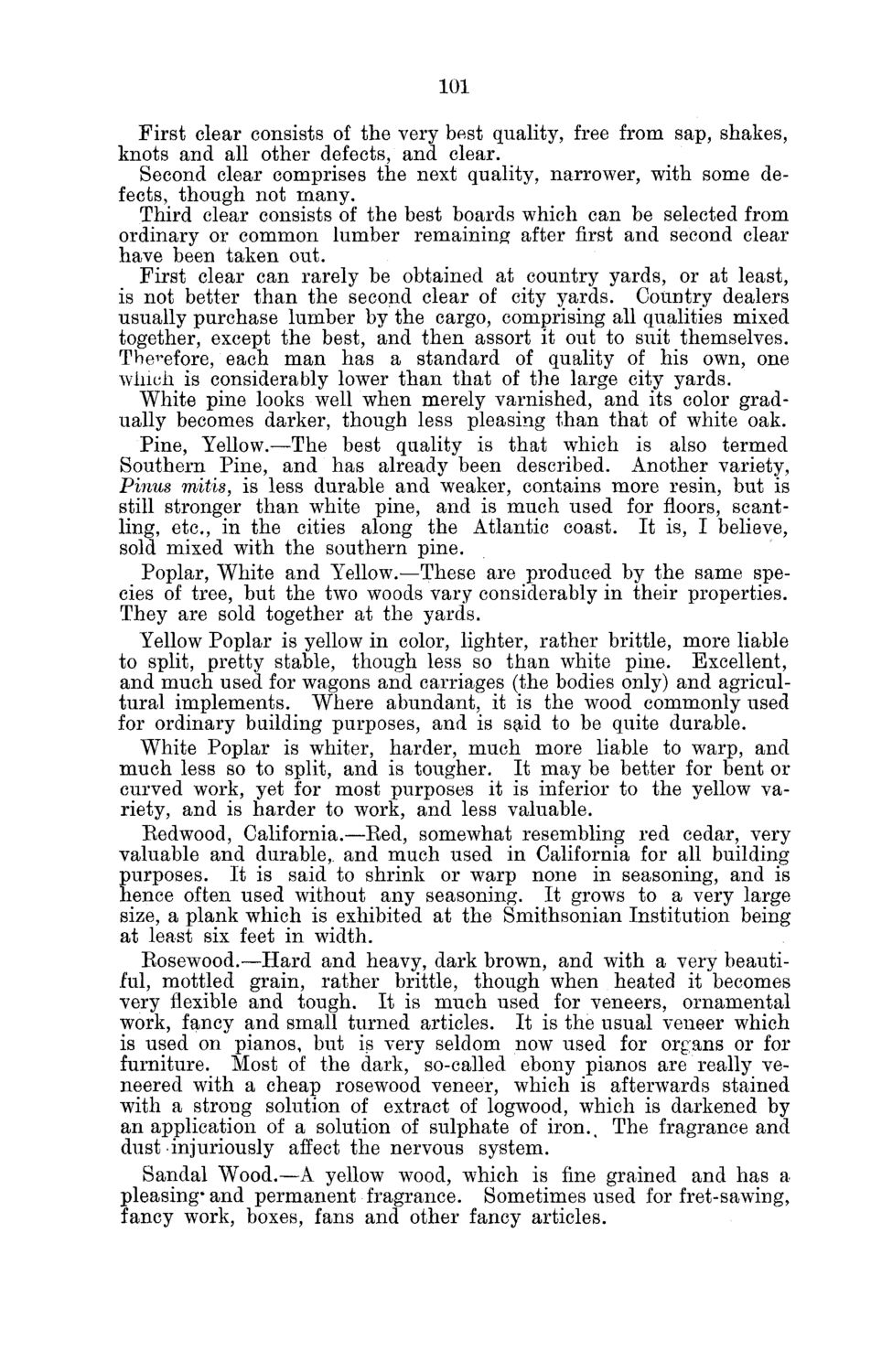| |
| |
Caption: Board of Trustees Minutes - 1880
This is a reduced-resolution page image for fast online browsing.

EXTRACTED TEXT FROM PAGE:
101 First clear consists of the very best quality, free from sap, shakes, knots and all other defects, and clear. Second clear comprises the next quality, narrower, with some defects, though not many. Third clear consists of the best boards which can be selected from ordinary or common lumber remaining after first and second clear have been taken out. First clear can rarely be obtained at country yards, or at least, is not better than the second clear of city yards. Country dealers usually purchase lumber by the cargo, comprising all qualities mixed together, except the best, and then assort it out to suit themselves. Therefore, each man has a standard of quality of his own, one winch is considerably lower than that of the large city yards. White pine looks well when merely varnished, and its color gradually becomes darker, though less pleasing than that of white oak. Pine, Yellow.—The best quality is that which is also termed Southern Pine, and has already been described. Another variety, Pinus mitis, is less durable and weaker, contains more resin, but is still stronger than white pine, and is much used for floors, scantling, etc., in the cities along the Atlantic coast. It is, I believe, sold mixed with the southern pine. Poplar, White and Yellow.—These are produced by the same species of tree, but the two woods vary considerably in their properties. They are sold together at the yards. Yellow Poplar is yellow in color, lighter, rather brittle, more liable to split, pretty stable, though less so than white pine. Excellent, and much used for wagons and carriages (the bodies only) and agricultural implements. Where abundant, it is the wood commonly used for ordinary building purposes, and is s^id to be quite durable. White Poplar is whiter, harder, much more liable to warp, and much less so to split, and is tougher. It may be better for bent or curved work, yet for most purposes it is inferior to the yellow variety, and is harder to work, and less valuable. Eedwood, California.—Eed, somewhat resembling red cedar, very valuable and durable,, and much used in California for all building purposes. It is said to shrink or warp none in seasoning, and is hence often used without any seasoning. It grows to a very large size, a plank which is exhibited at the Smithsonian Institution being at least six feet in width. Eosewood.—Hard and heavy, dark brown, and with a very beautiful, mottled grain, rather brittle, though when heated it becomes very flexible and tough. It is much used for veneers, ornamental work, fancy and small turned articles. It is the usual veneer which is used on pianos, but is very seldom now used for organs or for furniture. Most of the dark, so-called ebony pianos are really veneered with a cheap rosewood veneer, which is afterwards stained with a strong solution of extract of logwood, which is darkened by an application of a solution of sulphate of iron.. The fragrance and dust injuriously affect the nervous system. Sandal Wood.—A yellow wood, wrhich is fine grained and has a pleasing-and permanent fragrance. Sometimes used for fret-sawing, fancy work, boxes, fans and other fancy articles.
| |